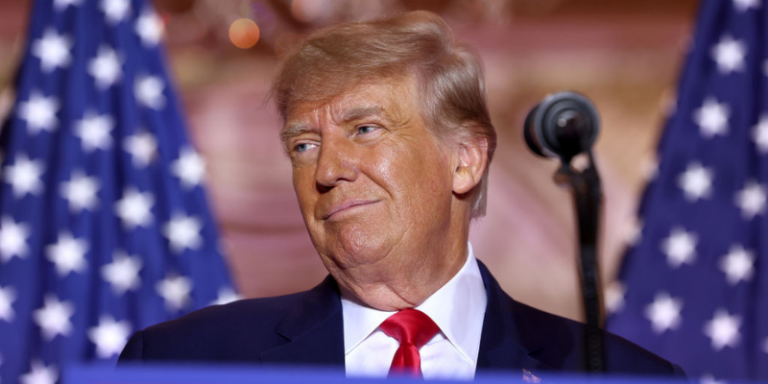The Spill: Racing to be President
Weekly news you can use.
By: GenZ Staff | January 14, 2020 | 849 Words

(Photo by Joe Raedle/Getty Images)
Iran De-Escalation and Plane Crash
Relations between Iran and the U.S. calmed this week. Iran is a country in the Middle East that has been a long-time adversary of the United States. Tensions had risen over the death of Iranian General Qassem Soleimani, ordered by President Trump. Iran retaliated against the U.S. by firing over a dozen rockets at military bases in Iraq with a U.S. military presence.
Iran informed the Iraqi authorities of the strikes in advance so that the bases could be evacuated. No direct deaths or injuries resulted from the attack. Since no one was hurt, the move was considered an attempt to de-escalate the situation and avoid further conflict.
President Trump appeared in the White House Grand Foyer to deliver a public response to the strikes. While he did not advocate for further military action against the Middle Eastern country, Trump announced that the U.S. would place “additional punishing economic sanctions” on Iran, until it “changes its behavior.” Sanctions are penalties applied to a country, and often take the form of economic restrictions or bans on trade. Despite these limits, the president suggested the two countries could make an agreement in the future. “We must also make a deal that allows Iran to thrive and prosper,” he said, “Iran can be a great country.”
Although the Iranian rocket attack didn’t end any military lives, it did result in a passenger plane crash that killed over 170 people. Although Iran at first denied that it had brought the plane down, it later admitted that the flight was mistaken for an incoming missile and shot down. Iranian President Hassan Rouhani tweeted that “The Islamic Republic of Iran deeply regrets this disastrous mistake. My thoughts and prayers go to all the mourning families.” Since then, the country has faced protests from angry citizens, and several people have been arrested over the incident.
World’s First Living Robots?
Scientists claim they have created the world’s first “living robots,” using cells from frogs. Researchers from the University of Vermont and Tufts University used a supercomputer to design the life-forms, which were then created using biological material. Resembling a clump of cells, the organisms are called “xenobots” after the African clawed frog species from which the tissue was taken, Xenopus laevis.
 “These are novel living machines,” says Joshua Bongard, a computer scientist and robotics expert who co-led the research. “They’re neither a traditional robot nor a known species of animal. It’s a new class of artifact: a living, programmable organism.”
“These are novel living machines,” says Joshua Bongard, a computer scientist and robotics expert who co-led the research. “They’re neither a traditional robot nor a known species of animal. It’s a new class of artifact: a living, programmable organism.”
“You look at the cells we’ve been building our xenobots with, and, genomically, they’re frogs. It’s 100% frog DNA–but these are not frogs. Then you ask, well, what else are these cells capable of building?” added co-lead researcher Michael Levin.
The organisms are able to move around on their own, are biodegradable, and can regenerate themselves when damaged.
The scientists claim the half-animal, half-robot beings could be used for medical treatments inside the human body, to collect microplastics in the ocean, or to clean up radioactive contamination. Others, however, may express worries about the results and ethics of manipulating the basic building blocks of life. That fear is not unreasonable,” Levin says. “When we start to mess around with complex systems that we don’t understand, we’re going to get unintended consequences.” He suggests that teams like his are taking the first steps to explore these areas.
Who Will Challenge Trump in November?
With the beginning of 2020, Americans have entered an election year. This November, citizens will get to choose the next president of the United States. Will President Trump win a second term, or will he be defeated?
The Democratic Party is hoping to mount an effective challenge against Trump for the White House. To do so, it must first decide through a series of primary votes who will be the presidential nominee. When the election season began, around two dozen candidates stepped forward, and over the last few months, we have seen several drop out either from lack of funds or lack of national support. So who is most likely to go head-to-head against the president?
Former Vice President Joe Biden is ahead in most national surveys. He is predicted to be the eventual nominee due to his experience in the White House.
Vermont Independent Senator Bernie Sanders has also done very well in polls recently; he is a close second to Biden and may win many of the state primaries. Favoring a socialist approach to politics, many wonder whether he can gain votes against Donald Trump.
Massachusetts Senator Elizabeth Warren also has a chance to win the nomination. Although she is behind both Biden and Sanders in the race, she has a lot of support among those who feel there should be a woman in the White House. How she performs in the upcoming primary ballots will determine if she stays in the race or perhaps gets offered the role vice president.
Now that some well-known politicians like Cory Booker, Julian Castro, and Beto O’Rourke have dropped
out, only 12 candidates remain in the race.

















